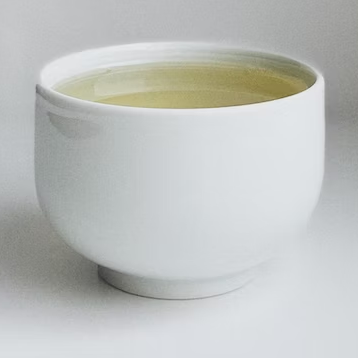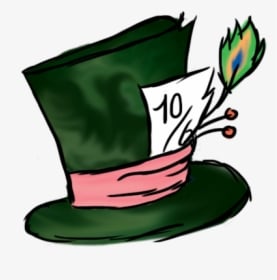So as a way of weaning myself away from less healthy beverages I’ve began a little foray into teas. Does anyone have things like little cheat sheets/charts, dos and don’ts or even just general tea recommendations for someone who has no real tea knowledge?
This is a good article: The Non-Judgmental Guide to Getting Seriously Into Tea
You should try different types of teas. Teas are classified into 6 categories: White, green, yellow, black, oolong and post-fermented (also known as puer or puerh). Puerh is further divided into ripe (shu) and raw (sheng) puerh. Also teas from different countries have their own characteristics. Try them all, and find your favorites.
Supermarket teas, whether teabags or loose leaf, aren’t very good in general. Of course, there are exceptions, and if flavored teas is what you like, there’s plenty of those in markets. But if you want good loose leaf teas, you need to buy from tea shops. Here’s a long list of online tea shops around the world. You can use the search feature to filter the list. If you, for example, want to find shops that sell teaware and are based in United Kingdom, you can search for “teaware kingdom”.
If you want to buy teaware, a good rule for what to buy is this: Spend the money on tea instead. Don’t buy some crazy expensive clay pots, when a simple porcelain gaiwan (cup with a lid) does the job perfectly.
The biggest piece of advice I can give is to avoid tea bags. They usually contain low quality fannings, which don’t give a good flavour. The tea also doesn’t have enough space to expand and steep properly inside them.
If you’re looking at getting a teapot to brew loose leaf tea, maybe get a gaiwan instead. It’s great for most types of tea, save perhaps japanese greens, and allows you to brew with a high leaf to water ratio without using up too much tea.
Also, maybe try to force yourself to drink tea straight, without adding anything, since it can obscure some of the flavours. You’ll get used to it after a while, and I honestly prefer most teas straight (though I usually drink black teas with sugar and milk, since it’s just a stellar combination)
For recommendations, it’s hard to say, since everyone has their preferences. The main types you might want to try are:
-
White teas - these are the least oxidized and generally have bright grassy / floral flavour profiles. Notable ones are Bai Mu Dan, silver needles…
-
Green teas - somewhat more oxidized than white, but still very unoxidized. Are usually pan-fired or steamed to lock in the flavours and stop oxidation. Chinese green teas generally taste just about like what you would expect a green tea to taste like, fresh, grassy, and vegetal. Examples are Longjing, Huangshan Maofeng, Bi Luo Chun, Taiping Houkui… Japanese green teas on the other hand tend to be more vegetal and umami, with notes like cooked spinach or seaweed. There are multiple types: gyokuro, sencha, matcha, bancha, genmaicha, kukicha, houjicha. Gyokuro is the most highly valued out of these and is shaded before harvest to bring out the umami flavour.
-
Oolong teas - these are the most diverse. They are more oxidized than green teas but less than black, which gives them interesting fruity, woody, mineral and floral notes. They are often rolled into tight balls and sometimes smoked. Notable ones include Tie Guan Yin, Da Hong Pao, Dancong, Dong Ding, Jin Xuan…
-
Black teas - the most oxidized, are usually dark, full bodied and can sometimes have fruity flavours. The most notable are teas from Assam, Ceylon, Darjeeling (though some Darjeeling teas lean more towards oolong), Keemun and other Chinese and African black teas.
-
Pu’er - these are are usually teas from Yunnan province, China, and are fermented and pressed into cakes called Bing, which are then dried. There are two types of pu’er, sheng (raw) and shou (cooked). Shou usually has earthy and woody flavours, while sheng can be brighter and more diverse.
When brewing, it’s a good idea to adjust the temperature based on the tea you’re making. White teas should be steeped at around 70-75 °C, greens at 75-80 °C (except gyokuro, which can be steeped at just 50-60 °C or even cold-brewed), oolongs at 80-85 °C and boiling water can be used for black and pu’er teas. To lower the temperature of the water you can just let it sit or transfer it between cold containers. Generally the temperature will drop around 10 °C every time you put it into a new cold container.
-
There is only one thing I think you need to know before diving into tea: Get the water temp right for the type of tea and don’t over-steep. When I first started, I thought all tea was just undrinkably bitter, but I was just steeping everything for too long in boiling water.
Then, my one recommended tip is to write a few notes about what you think about the teas as you try them. For the first year, my notes consisted of “bitter” or “I like this”. I can’t remember what the teas tasted like years later, so I wish I wrote down more.
Then, I just advise that you experiment yourself to find what works for you. Try out different tea-to-water ratios, water temps, steep times, and of course, many types of tea!




